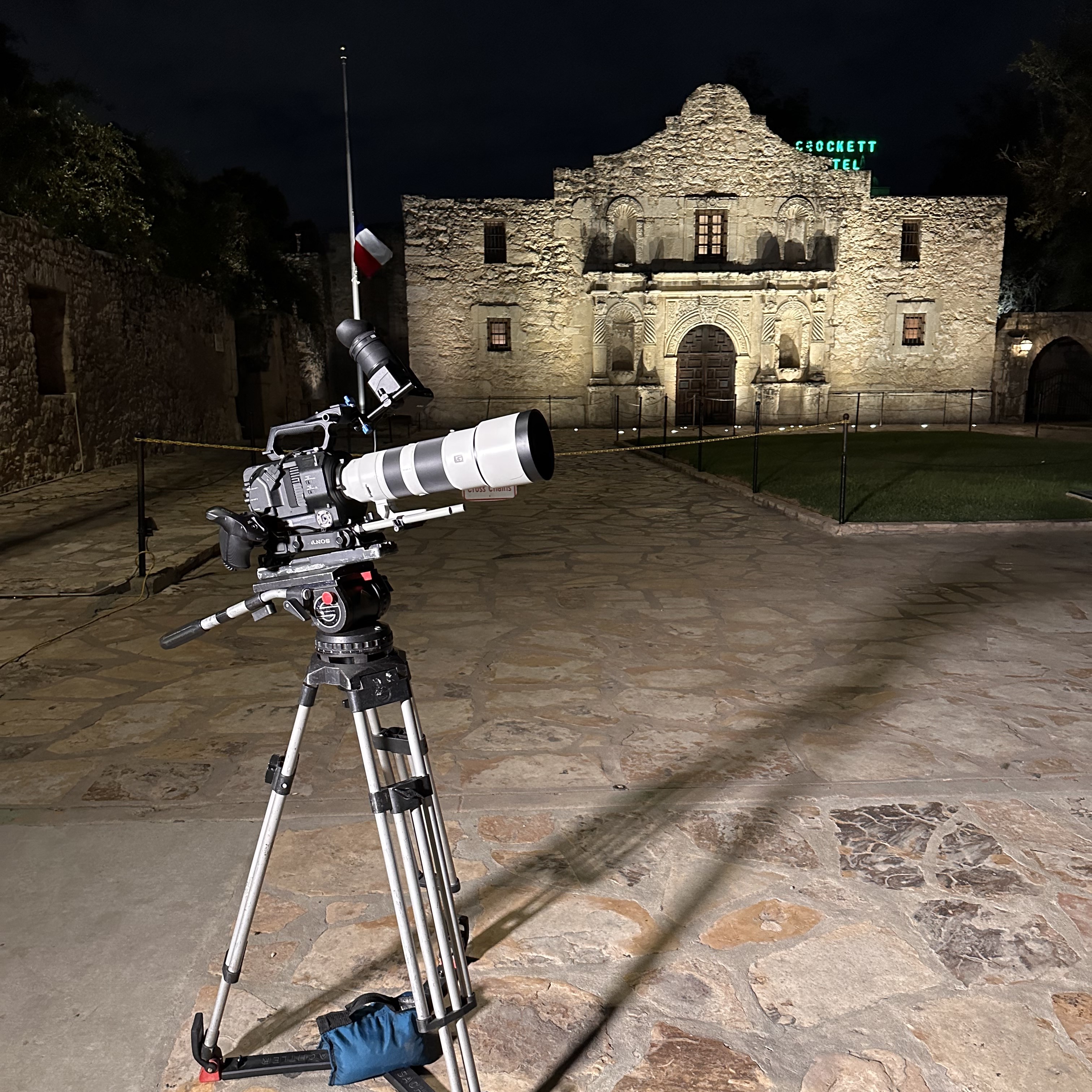A Fox Weather Correspondent's Tech Plans for Live Solar Eclipse Coverage
Fox Weather correspondent Robert Ray says their tech plans are reminiscent of a live sporting event with “live action, play-by-play [and] color commentary”

As Fox Weather prepares for its live coverage of the solar eclipse from April 6 to 8, Fox Weather correspondent Robert Ray describes some of his tech plans for the coverage by saying “we are covering this eclipse like a sporting event" with "live action, play-by-play, color commentary, stats, live interviews, dynamic graphics and fan reaction."
Like a sporting event, Ray adds that they have to be prepared for how fast the action unfolds and “how ready one must be technically”
Overall the free streaming weather service will have meteorologists and correspondents spanning nearly 10 cities to capture the events leading up to the full eclipse on April 8.
In this Q&A, Ray lays out some of the technologies he'll be using in his coverage and some of the challenges they face. It has been edited for length and clarity.
TV Tech: What are some of the technologies you are using to help with your eclipse coverage?
Robert Ray: Along with many Fox Weather team members, I'll be reporting live from the Indianapolis Motor Speedway, my coverage kicks off on Saturday April 6th and rolls all the way through the event on Monday the 8th.
From a tech perspective, coverage of the eclipse is robust and unique at Fox Weather...Imagine watching a correspondent give a play-by-play of the eclipse all the while seeing what he is capturing through his own eyes, live on Fox Weather. The latter is the plan.
Get the TV Tech Newsletter
The professional video industry's #1 source for news, trends and product and tech information. Sign up below.
A Fox Weather photojournalist will be shooting me and the crowds, I'll be shooting the eclipse with a Sony PXW-400 with a Canon lens and extender plus a certified solar neutral density filter to help with the live imagery and safety for the lens and camera. And of course, we will have custom Fox Weather protective eyewear. During the eclipse and after I'll be talking with folks getting their reactions all the while training the camera on the eclipse. Capturing the eclipse takes technical skills with not only focus and riding the F-stop but following how fast it all happens, remember, the Earth is moving and so will the images, so it takes some concentration. During the eclipse I'll offer viewers the chance to peek into the lens of the Sony 400 and I'll also have my Solar Binoculars to hand folks as well.
Transmitting the event will be multi-faceted, we will utilize LiveU tethered Wi-Fi technology connected to both cameras. If we have any signal issues from the WI-FI we can pivot to a traditional satellite truck that will be standing by and helping with the many facets of the broadcast and stream.
TVT: What are some of the challenges posed by eclipses from a technical angle and how are you addressing those?
Ray: The approach we are taking, with 2 cameras and the correspondent (myself) shooting the eclipse while doing live play-by-play and interviews with people is a recipe for anything to go wrong. But pushing the envelope is rewarding, especially on a live broadcast.
Having said that, as a photojournalist and a guy who can talk with anchors back in NY on live TV, I feel this immerses the viewer, gives them totally unique access and perspective into the wonder and beauty of the eclipse & how the phenomenon is captured, all live. My biggest challenge is framing the sun properly so that it can make its way from the bottom edge of the left-hand side of the screen and make its way diagonally to the upper right quadrant of the frame, or screen. The latter will allow the viewer to see the eclipse properly and will give me room to do quick interviews with spectators while the eclipse is happening. Now, I'll have to be diligent in getting my eye into the viewfinder about every 20 seconds to monitor the framing and exposure. If cloud cover is robust and the sun dips in and out, then the challenge of exposure will be significant. Anything easy usually never has a big payoff anyway, so, that's my mantra in this coverage.
TVT: What did you learn from the ring of fire eclipse coverage last year?
Ray: Speed, I was reminded how fast the event happens & how ready one must be technically. We are talking about the speed of the moon's orbit moving at about 2200 mph, of course the effective speed at the surface is less and varies but that's why an eye needs to be in the camera frame & the adjustments are constant, required by the photojournalist to properly capture. The eclipse in April will last around 4 minutes, which as we know, is an eternity in the world of television, so its laser focus technically and mentally in the lead-up, during the vent and after. I'll need a cold one when this coverage is complete:)
TVT: Any other technical details?
We are covering this eclipse like a sporting event. Live action, play-by-play, color commentary, stats, live interviews, dynamic graphics and fan reaction. Looking forward to the challenge and excitement of this event. Fox Weather will have teams across the country, the coverage will be like no other.
George Winslow is the senior content producer for TV Tech. He has written about the television, media and technology industries for nearly 30 years for such publications as Broadcasting & Cable, Multichannel News and TV Tech. Over the years, he has edited a number of magazines, including Multichannel News International and World Screen, and moderated panels at such major industry events as NAB and MIP TV. He has published two books and dozens of encyclopedia articles on such subjects as the media, New York City history and economics.

